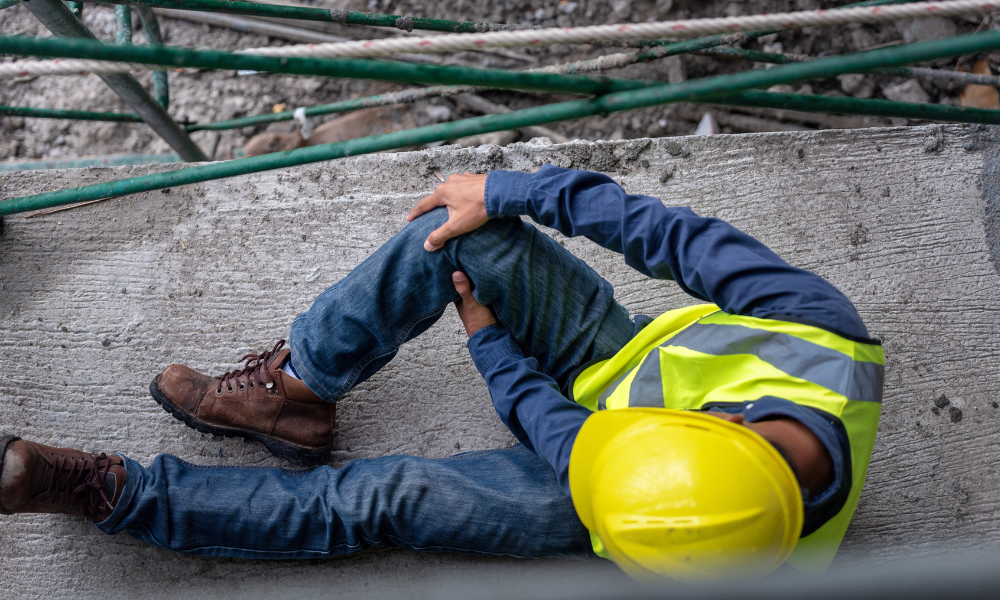Data shows tens of thousands of injury reports unmatched to claims filed

Thousands of workplace injuries in Ontario may be going unrecognized each year, according to researchers analyzing data from the province’s Workplace Safety and Insurance Board (WSIB). Their concern: that a significant number of incident reports submitted by health-care providers are not being followed by formal claims—potentially obscuring the true scale of workplace injuries and leaving some workers without support.
Between 2019 and 2023, Ontario health-care professionals filed more than 1.3 million “Form 8” reports after treating patients for suspected work-related injuries or illnesses. WSIB data shows that approximately 85 per cent of those were matched with a claim filed by either a worker or employer. The remaining 15 per cent—over 40,000 cases in 2023 alone—were logged as “incidents” but never converted into compensation claims.
The WSIB says unmatched reports typically involve workplaces not covered by the board, minor injuries, or individuals who decline to file a claim. It also says that sometimes multiple Form 8s may be received for a single claim.
“The WSIB receives over 250,000 reports from health care providers every year and the vast majority (85%) are quickly matched to claims,” said WSIB spokesperson Chrstine Arnott. “If any advocate knows of someone or anyone reading this story believes a form was submitted on their behalf but never heard from us, we encourage them to call us today so we can get their information and determine if they have a claim so we can help.”
According to Arnott, if a Form 8 arrives without accompanying documents, the WSIB notifies the worker and encourages them to submit a claim within six months. In a 2023 internal review of 5,000 unmatched reports, 84.5 per cent were resolved within two weeks. Of the remainder, 32 per cent of workers declined to file, 28 per cent intended to but didn’t follow through, and 30 per cent lacked sufficient identifying information.
Still, some researchers and advocates say the volume of unmatched reports, combined with the limited number of audits conducted by the WSIB, points to potential systemic underreporting and barriers to access.
A recent study led by Dr. Stephanie Premji, Associate Professor at McMaster University’s School of Labour Studies, and Chris Grawey, a community legal worker with the Injured Workers Community Legal Clinic, identified widespread claims of injured workers being discouraged from filing. “Our study wasn’t originally about claim suppression, but almost every worker we spoke to had a story about being pressured not to report,” said Premji. “It ranged from threats to more subtle incentives like promises of future employment.”
The WSIB has the authority to investigate cases of claim suppression—a practice made an offence under provincial law in 2015. But enforcement appears limited. Grawey says the board conducts about 300 “One Touch” audits annually, which combine financial checks with compliance reviews. While the WSIB says it uses a risk-based matrix to target high-risk employers, Grawey believes the number of audits is insufficient given Ontario’s 330,000 registered employers.
“When more than half of these audits result in the discovery of new claims, that tells us they’re effective—but it also suggests many cases are going undetected,” Grawey said.
He and Premji are now leading a new research initiative focused explicitly on claim suppression across Canada. The project will analyze how various provinces define and address suppression and include an expanded interview study in Ontario to better understand how suppression is experienced across different industries and communities.
“We want to broaden the understanding of claim suppression beyond just overt employer misconduct,” said Premji. “There are also policy and procedural issues within the WSIB itself—barriers in the claims process, return-to-work pressures, and policies that may unintentionally deter filing.”
While the WSIB defends its current approach as evidence-based and proportionate, advocates say further transparency, expanded audits, and clearer investigative standards are needed to fully address underreporting.
“If a system allows tens of thousands of flagged injuries to disappear without follow-up, that has real consequences—for worker protections, for public health data, and for safety prevention strategies,” said Grawey.




